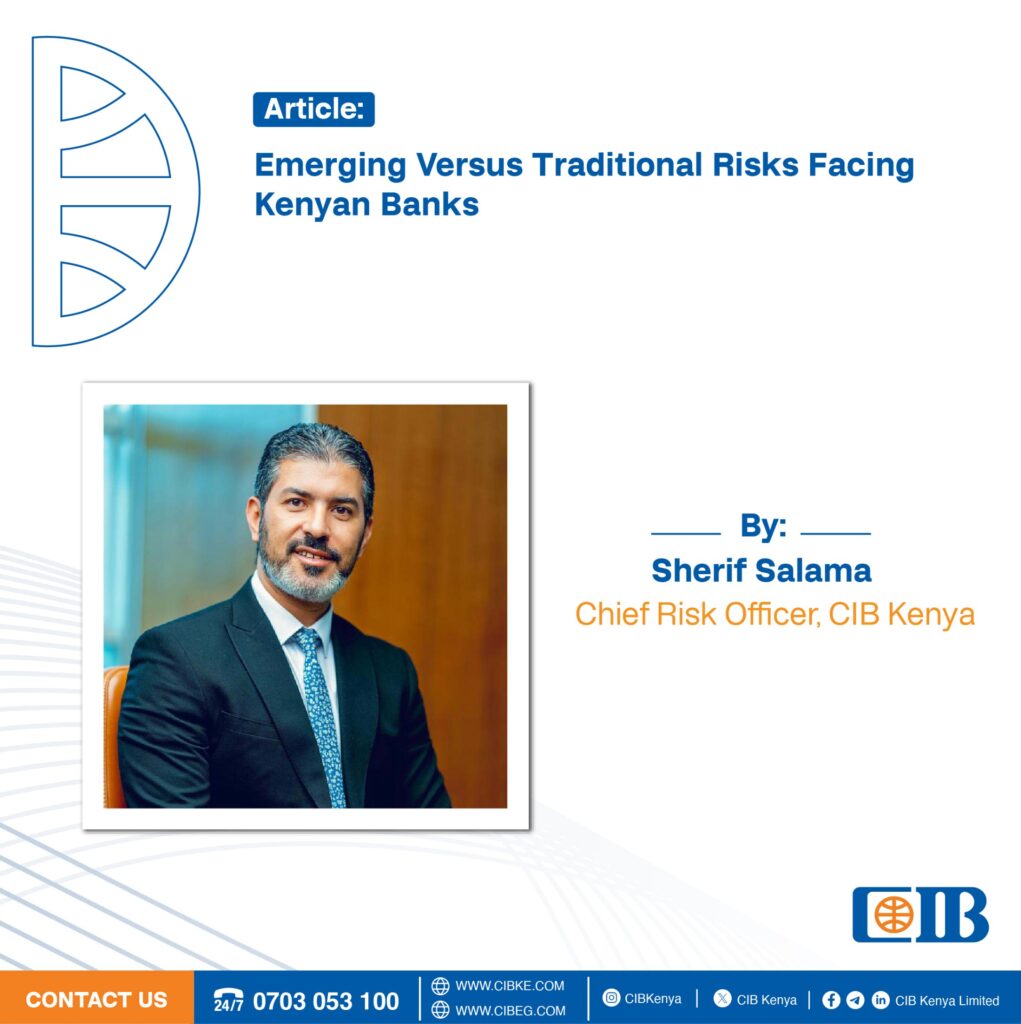
Risk management in banks is not just a support function or a second line of defence—it is a critical component of business strategy. The risk manager has become a key business partner across all functions. Effective risk management helps banks minimize losses and improve profitability, while poor risk oversight can lead to bank failures, jeopardizing millions of client deposits and investors’ capital.
Most banks have well-structured risk management frameworks addressing traditional risks such as credit, market, operational, and liquidity risks. These are complemented by enterprise risk management frameworks that address non-financial risks such as fraud, reputational risks, and third-party risks.
While Traditional risks are still contributing the main part of the risk chart and the driver for financial losses, emerging risks such as cybersecurity risks, climate change risks, and geopolitical risks are becoming crucial concerns and prominent for potential losses. These emerging risks are reshaping the risk landscape for the financial sector.
In Kenya, banks are increasingly aware of the potential impacts of cybersecurity risks and climate change risks. For example, climate change has negatively affected business continuity and economic stability in recent years.
Emerging risks are unique and unpredictable, driven by technological breakthroughs, regulatory shifts, environmental changes, and geopolitical dynamics. These risks are further compounded by the rapid digitalization and business transformation across Africa’s financial landscape, with a growing number of financial institutions, diversified products, and expanding access to financial services.
Failure to address emerging risks with proper frameworks can lead to financial crises, business disruptions, instability, and economic downturns with far-reaching consequences for individuals, businesses, and governments.
Key Emerging Risks:
- Climate Change Risks:
Long-term shifts in temperatures and weather patterns, caused by both natural events and human activities like burning fossil fuels, present two types of risks:- Physical Risks: Damage from extreme weather events.
- Transition Risks: Costs associated with transitioning to a low-carbon economy.
- Geopolitical Risks:
Events like the Russia-Ukraine war or tensions in US-China relations affect global economic stability, influencing growth, inflation, financial markets, and supply chains. - Cybersecurity Risks:
These include financial losses, operational disruptions, or reputational damage resulting from failures in information technology systems.
Building an Emerging Risk Framework
To proactively address these risks, banks must implement robust emerging risk frameworks encompassing the following processes:
- Systematic Risk Identification:
Establish structured processes to detect new risks early, supported by early warning systems to shift from reactive to proactive management. - Comprehensive Risk Assessment:
Evaluate the likelihood and potential impact of risks using advanced models supported by a robust data warehouse and data analytics capabilities. - Strategic Response and Mitigation:
Develop strategies to address, mitigate, or capitalize on identified risks. - Anticipating Future Trends:
Stay ahead of changes in the market, technology, regulations, and other external factors that could introduce new risks. - Fostering Innovation:
Promote a culture of innovation by exploring new business models, products, or services in response to emerging risks. - Enhancing Organizational Resilience:
Build financial and organizational capacity to withstand and recover from adverse situations. - Securing Competitive Advantage:
Use risk management as a strategic tool to outperform competitors.
Conclusion
The global economy is evolving rapidly, presenting new challenges for financial institutions. Virtual banks, digital currencies, cashless economies, and AI-driven operations are no longer optional but essential for survival. Cloud-based data and end-to-end digital processes are becoming industry standards rather than competitive advantages.
To remain competitive, Kenyan banks must invest in building robust emerging risk management frameworks. These frameworks must be proactive, flexible, and integrated, supported by AI, data warehouses, and advanced analytics to navigate the complexities of an increasingly dynamic risk landscape.
By Sherif Salama